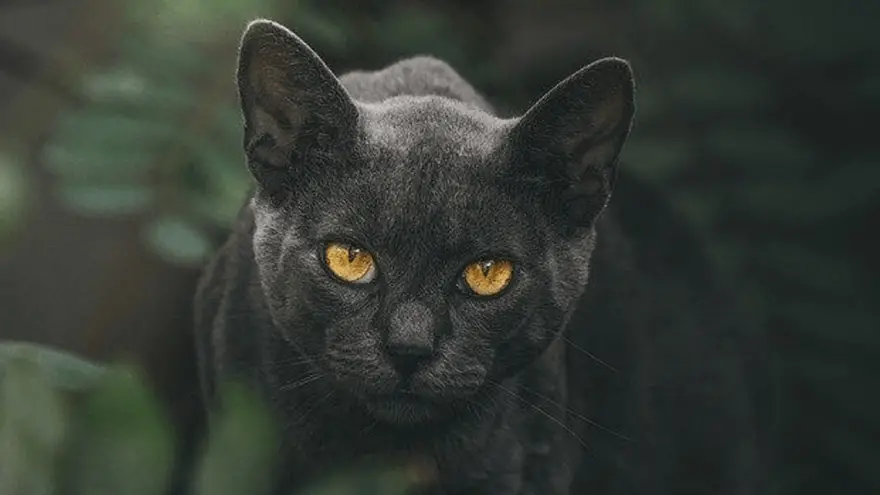
Bombay
Most people heard the myth about black cats and bad luck. However, if you get a black Bombay cat, the only thing you will get at home is a beautiful companion always ready to play. If you ask us, black cats are absolutely gorgeous. This breed is very elegant, and many Bombay cats make families across the globe very happy. If you want to become a Bombay cat owner, you should know a few things about this breed.

Length:
13 - 20 in

Weight:
8 - 15 lb

Origin:
Kentucky, USA

Life Expectancy:
12 - 20 years
Breed History
Some breeds are naturally occurring, and some are created deliberately to achieve specific goals. The Bombay cat breed is the latter one. This breed was created in the 1950s by a cat breeder named Nikki Horner. She lived in Louisville, Kentucky, and she decided to experiment a little. Horner loved the Burmese and American Shorthair breeds and was curious about what might happen if she crossed them. The results were adorable little black kittens. After a bit of consulting, she created a breeding plan and used those kittens as the foundation for the new breed she called the Bombay. Funny enough, the cat has absolutely no connection to India.

Cat Breed Characteristics
This breed’s history might give the impression you can simply cross two pureblooded breeds and claim you created a new breed. That, of course, is not true. To create a breed, you need to create a breeding line that will consistently pass the same characteristics to its offspring. These cats have round faces, medium-large ears, and copper or green eyes. Here are other essential characteristics of the Bombay cat.
Coat
Other than the color, the texture of a cat’s coat is also important. The Bombay breed has a short, sleek coat that is pretty easy to maintain. The cat will do most of its grooming, but you should still brush it once a week to keep the coat looking its best.

Coat color
One of the first things anyone will notice is this breed’s color. Most Bombays are black, which isn’t that surprising since the black gene is dominant. However, some Bombay litters can produce sable-colored kittens. These kittens cannot participate in cat shows but still make fabulous pets.
Size
The Bombay breed is not the largest cat breed. In fact, they are considered medium-sized. Females are usually smaller than males, and most adults are 8 - 15 pounds and 13 - 20 inches.
Temperament
The Bombay’s looks are certainly important, but looks alone are not what makes them great pets - their temperament does. Luckily, the Bombay’s temperament is fantastic. These cats are rather intelligent, energetic, affectionate, and absolutely love warm spots in their homes. They will gladly sleep with their owners in their beds and cuddle with them during the day. The Bombay is playful, so make sure you have enough time to spend with them. They are adaptable, which makes them well-suited for different kinds of homes. These cats are great with kids and other animals.

Health
Despite cat breeders’ best efforts, most pureblooded cats still have breed-specific diseases they are prone to. The Bombay is generally considered a healthy cat breed with a lifespan of 12 - 20 years. However, since they are the descendants of the Burmese, they inherited their health issues. Some of those issues are;
- Craniofacial defect - The Bombay breed has a gene for the craniofacial defect. This is an issue cat breeders need to be aware of.
- Corneal dermoid - Skin and hair under the cornea
- Congenital peripheral vestibular disease - Affects the cat’s balance and movement.
- Lipemia of the aqueous humor - Milky appearance during kittenhood.
- Orofacial pain syndrome - The eruption of the second teeth causes extreme discomfort, and young cats tear themselves to relieve the pain.
- Diabetes Mellitus - Increased risk of diabetes.
- Flat-chested kitten syndrome - This is a disorder in cats wherein kittens develop a compression of the thorax caused by lung collapse.
This doesn’t mean the cat will develop any of these issues, but cat owners and their vets should be aware of them and keep an eye on early symptoms.
World Cat Finder Team

Updated at09.01.2022.

Share